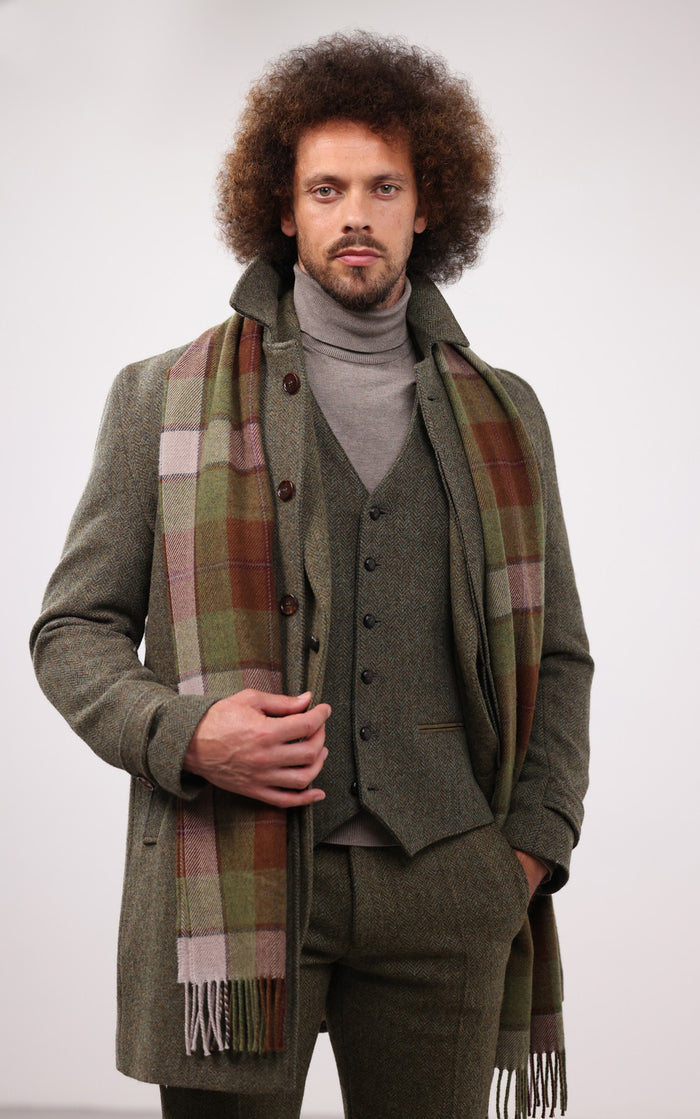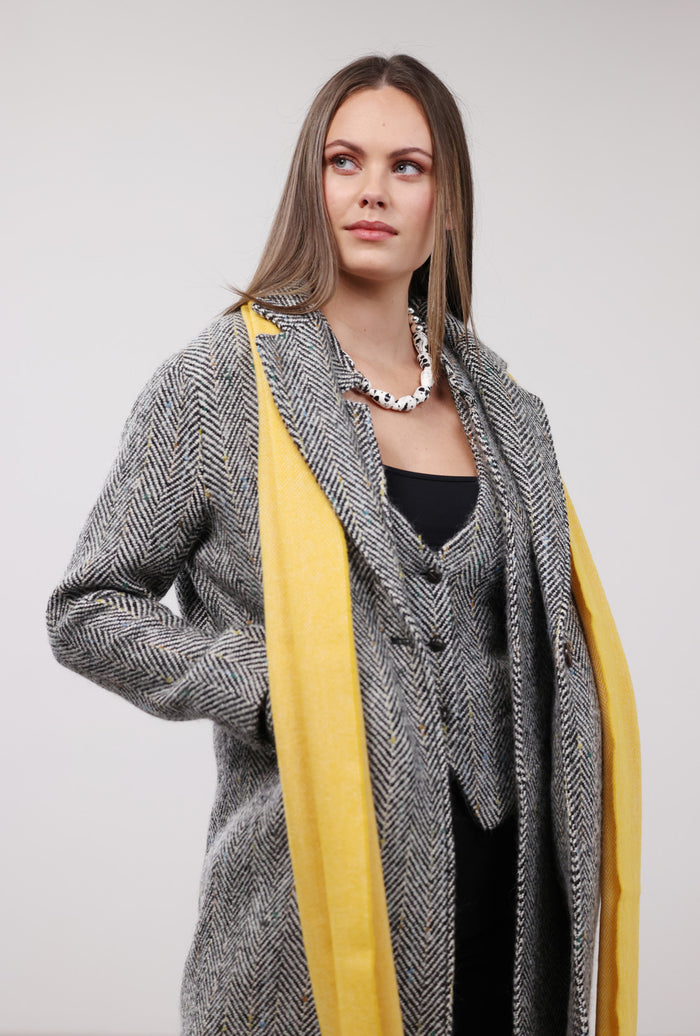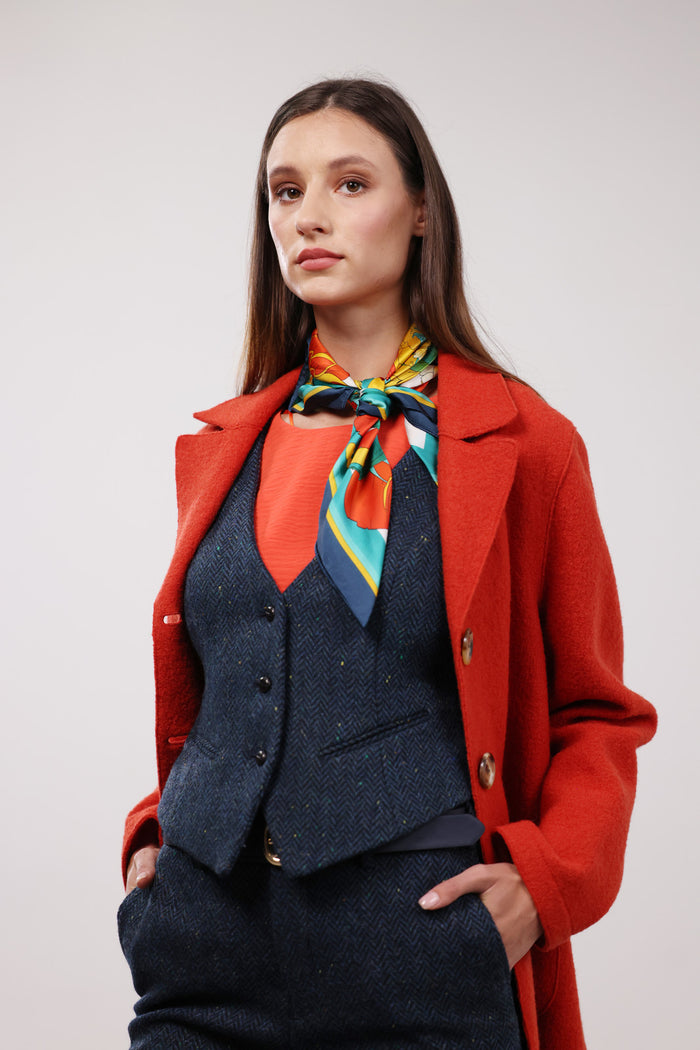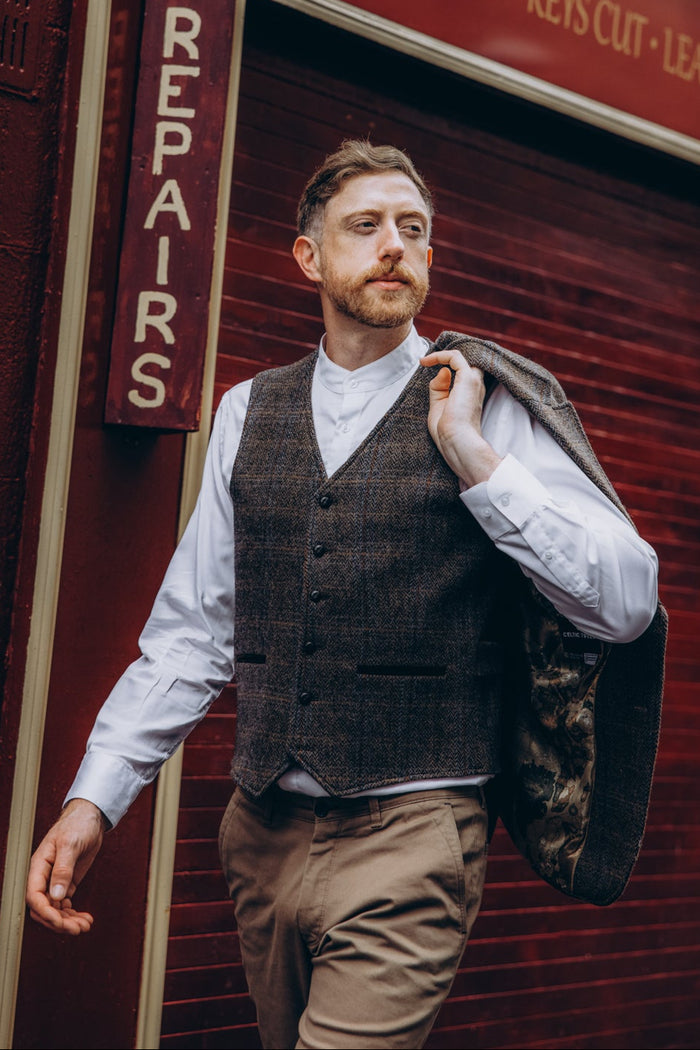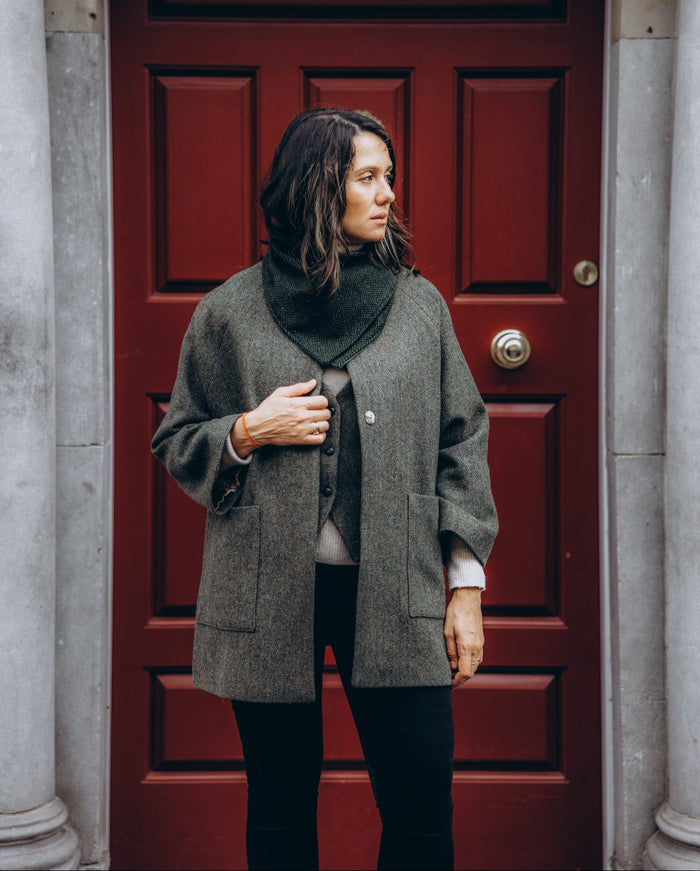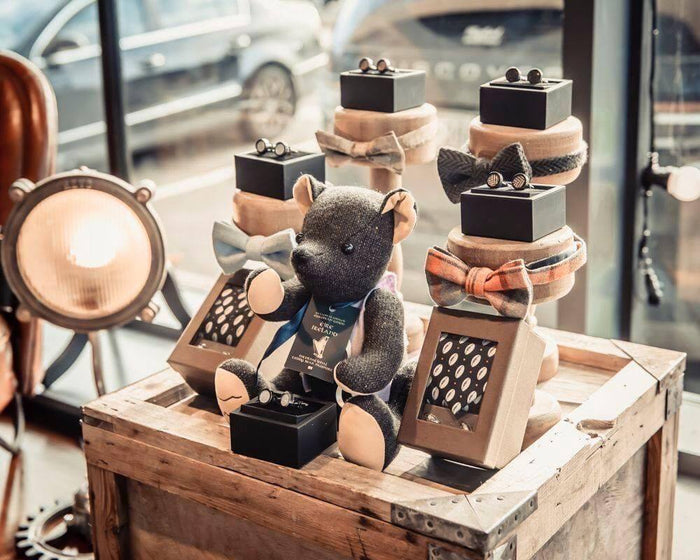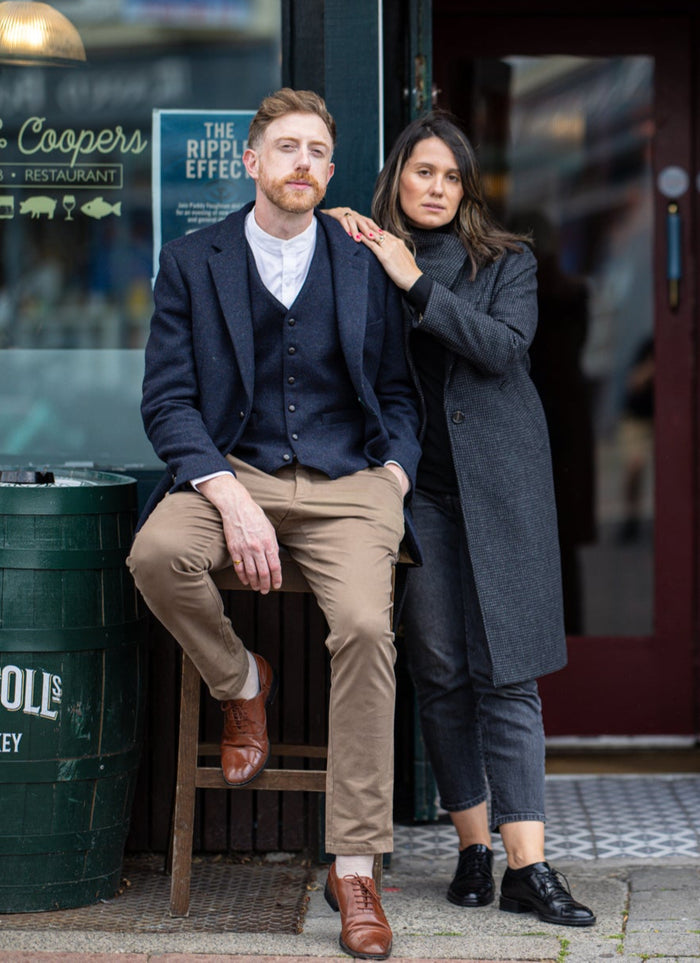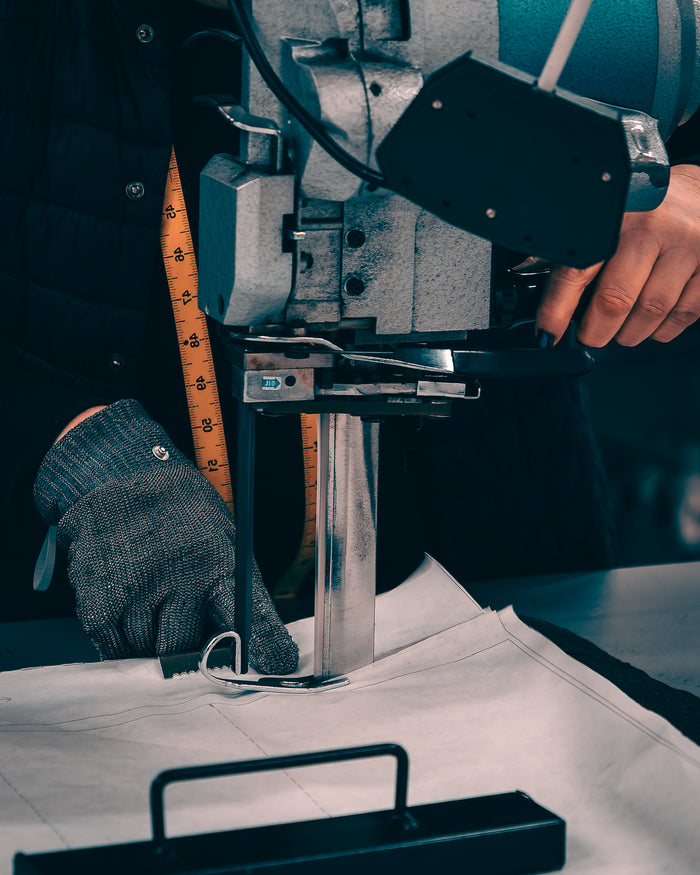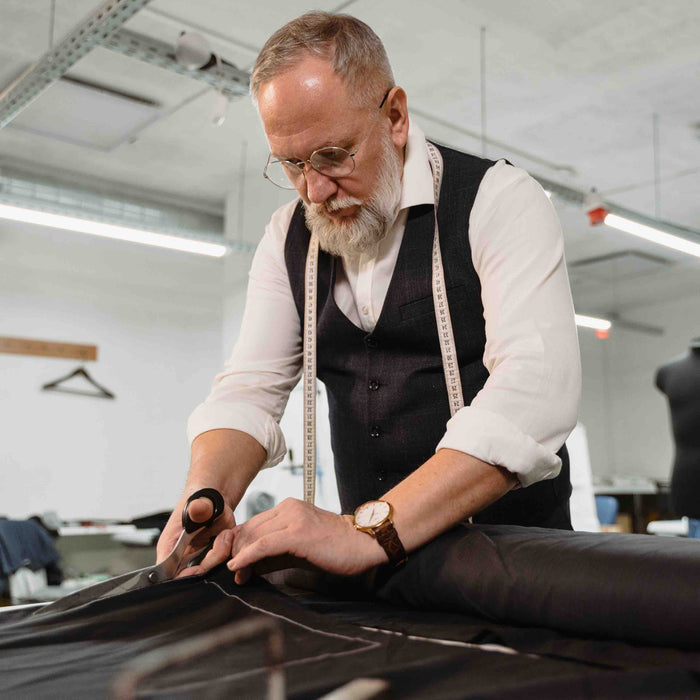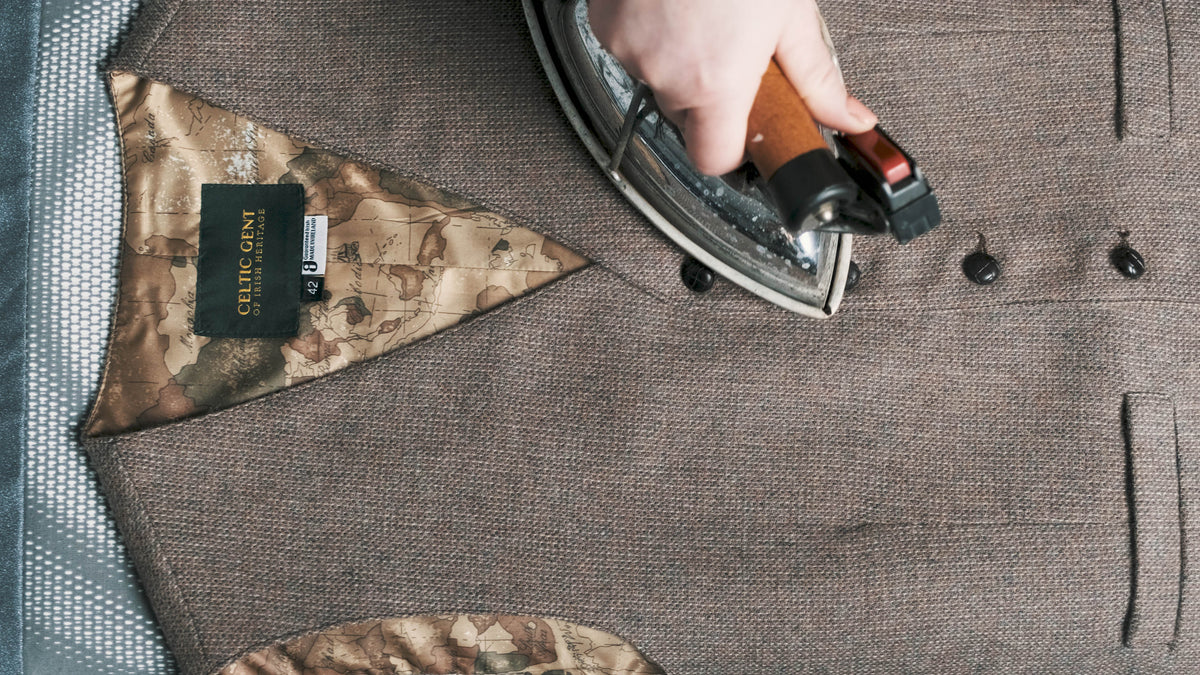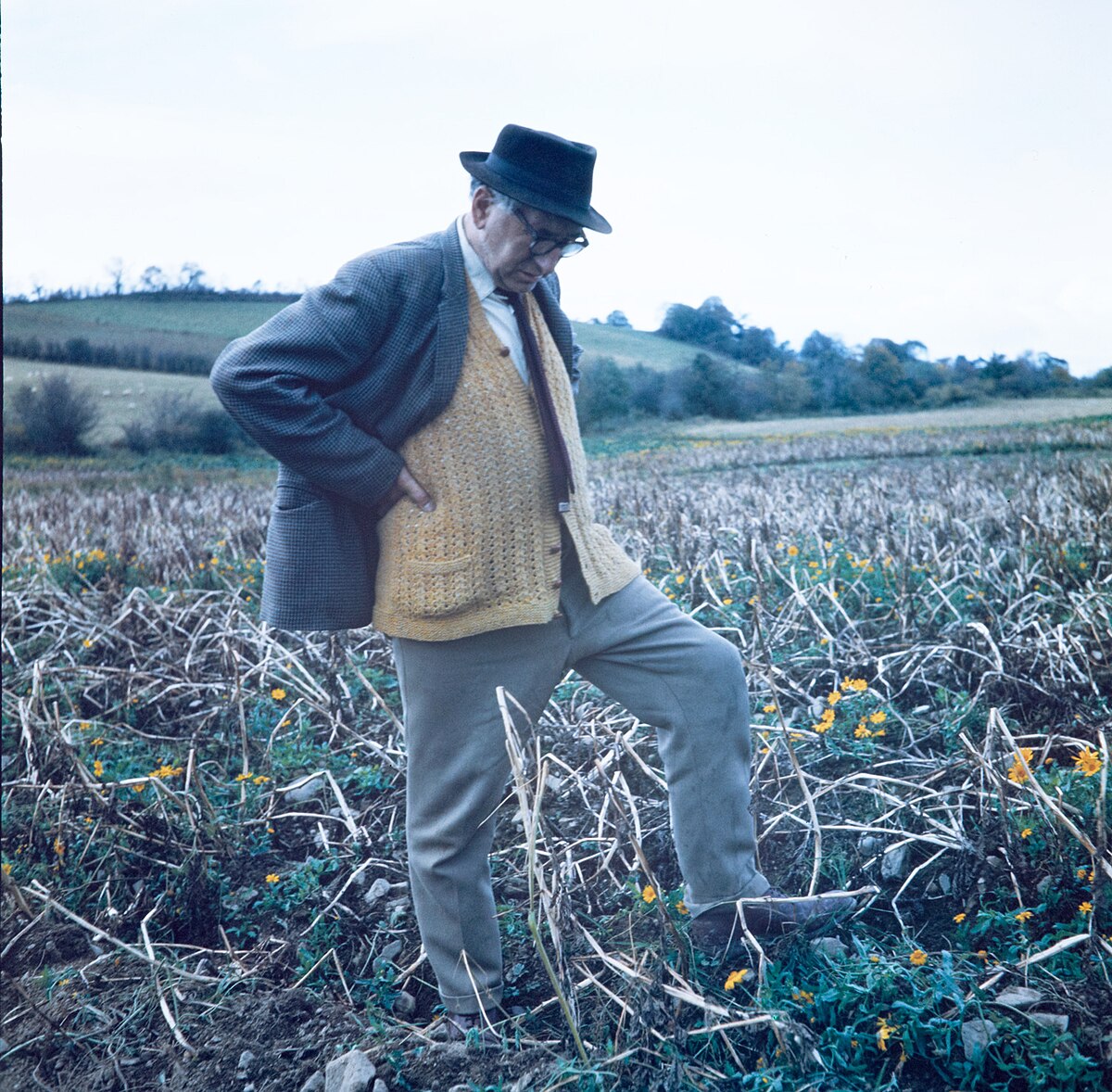
Patrick Kavanagh: The Poetry of Rural Ireland in Linen and Tweed
September 01, 2025
Patrick Kavanagh found beauty in the simplicity of everyday life, just as our handcrafted linen and tweed pieces capture the essence of understated luxury. This blog reflects on his poetic vision of Ireland and how slow fashion embraces the same authenticity - natural, enduring, and deeply rooted in tradition.
The Poet of the Land
In the rural heart of Ireland where Patrick Kavanagh was born, poets tended to draw inspiration from the unspoiled countryside, celebrating their deep-rooted bond with the land. His work was deeply influenced by his upbringing; working on a farm, Kavanagh experienced rural Ireland in everyday activities. This love for the simplicity and beauty of the countryside ultimately shaped Kavanagh’s pastoral poetry. Nature had prominently been a central theme in general Irish poetry, with early pieces rich in allusions to the natural world. Kavanagh began his poetic journey in the 1920s, with his earliest creations finding their way into Irish literary journals and newspapers. These first poems, like several of the future, brimmed with awe for nature. He often portrayed rural Ireland as a boundless well of beauty with a sacred glow, as if it were the handcrafted work of a Divine creator. Even today, the precise and striking language that Kavanagh used resonates, shining through translation.

A Man of Simple Pleasures
Kavanagh believed deeply in simplicity and minimalism. His personal belongings were modest, reflecting a conscientious resistance towards the idea of materialism. Kavanagh saw ‘little virtue in poverty’, believing that it often led to an obsession with fancy material things rather than freedom from them. His ideas about poverty expanded when Kavanagh moved to Dublin to pursue his literary career, experiencing a shocking transition from the quiet countryside to the busy city center. He became exposed to the realities of city life, and ultimately, the objective of increasing status. Kavanagh detested this crave and strived to remain simple; he regularly associated with working-class men in pubs. After learning about everyday struggles that hard working men face, Kavanagh published his piece The Great Hunger. Despite spending time leading up to the publication in Dublin, this narrative poem focused on the harsh realities of rural workers, shedding light on their difficulties. Although Kavanagh was simple, he never allowed himself to become unproductive; he found joy in working to reveal problems and advocate for solutions through poetry.
The Fabric of Rural Life
Linen and tweed were the primary working fabrics of 20th-century Irish rural life. Most likely arriving as early as the time of early Christianity, linen has deep roots in Ireland, largely due to its strong ties to rural life. It wasn’t until the 17th century that the industry truly began to take shape. Under rule by figures like the Earl of Stafford and the Duke of Ormonde, a more organized and popularized linen trade emerged, helping to set the scene for the early 1900s. Linen was the primary focus for the Industrial Revolution in the north of Ireland, shaping the region’s engineering, trade, and infrastructure. In the 20th century, Irish linen proved to be indispensable during both World Wars – a key component for high production demands. Linen was used in everything from nets, twine, and rope to sailcloth, hosepipes, and even airplane wing sealants. Tweed, although not as demanded as linen, was also a critical part of 20th century rural life. Primarily a home-based and community-led market, tweed became integral for regions with poor land and high unemployment. Ultimately, the fabric would come to be considered the working fabric of rural life in 20th century Ireland, especially in counties like Donegal, Kerry, and Galway.

From Farm to Tailored Elegance
At Celtic Tweed, our modern menswear honors Ireland’s agricultural roots while embracing refined tailoring. We value local Irish fabrics like linen and tweed to support the homegrown source, while adding a modern touch. Our tweed jackets and vests are carefully stitched together, blending rich textures and earthy tones to create graceful pieces. We strive to design distinctive products that honor Ireland’s past while remaining perfectly suited for today’s lifestyle.
Transitional Dressing, Timeless Quality
Linen and tweed are often regarded as timeless fabrics, greatly due to their efficiency. Linen’s natural strength allows for resistance against wear and tear, delivering long-lasting value. Made from the flax plant, linen requires far less water and pesticides than crops like cotton, providing environmental benefits while remaining stylish and comfortable. Tweed, like linen, is a sustainable staple that effortlessly blends classic elegance with a contemporary edge, making it essential to have in any wardrobe. The distinctive patterns and textures offer endless styling options for both men and women. The fabric’s natural water resistance keeps you comfortable in unpredictable weather. On warmer days, both tweed and linen will provide fantastic breathability, allowing you to stay cool regardless of harsh conditions. And with their enduring durability, these fabrics don’t just follow trends but rather outlasts them. Here at Celtic Tweed, we focus on incorporating tweed and linen into our collection. By using sustainable, comfortable, and timeless fabrics, we provide polished, long-lasting pieces. Likewise, we emphasize making uniquely Irish products while commemorating Irish intellects like Patrick Kavanagh. The Kavanagh Blue Herringbone Tweed Jacket is the perfect choice for those who value thoughtful craftsmanship, consistent quality, and subtle nods to Ireland’s literary and rural history.

Dressing for Life’s Poetry
Quality clothing, like poetry, transcends generations, becoming a part of one’s legacy. Like a well-crafted poem, superior clothing is crafted with precision, intention, and care. Each stitch is purposeful and thoughtful. Wearing a tweed piece represents more than just a personal style – it preserves cultural identity and values, contributing to a fruitful legacy of heritage and history. Over time, these fabrics become reflections of who we are. Passed down or preserved, they carry echoes of history for the future, transforming them into fragments of remembrance. Even long after the moment has passed, a tweed piece will continue to be a part of your legacy.
Sources:
- https://www.academia.edu/524630/Patrick_Kavanagh_an_Irish_Pastoral_Poet_in_the_City?auto=download&auto_download_source=social-news Academia (Rosemarie Rowley)
- https://thegalwayreview.com/2013/03/15/patrick-kavanagh-mystic-or-realist-by-maureen-gallagher/ The Galway Review
- https://www.poetryfoundation.org/poets/patrick-kavanagh Poetry Foundation
- https://irishlinen.co.uk/lineage/ Irish Linen Guild
- https://www.image.ie/style/irish-tweed-how-the-next-generation-of-irish-designers-are-reinterpreting-the-heritage-textile-791749 IMAGE


